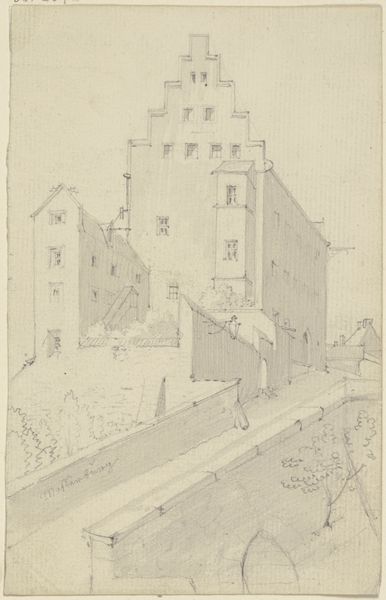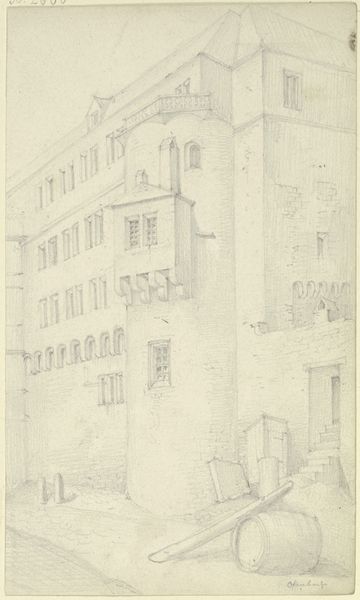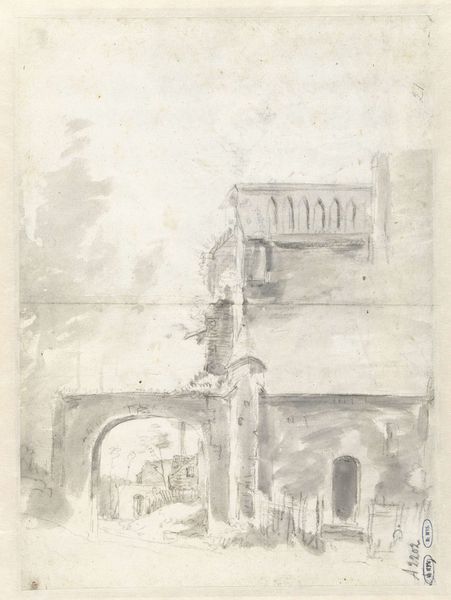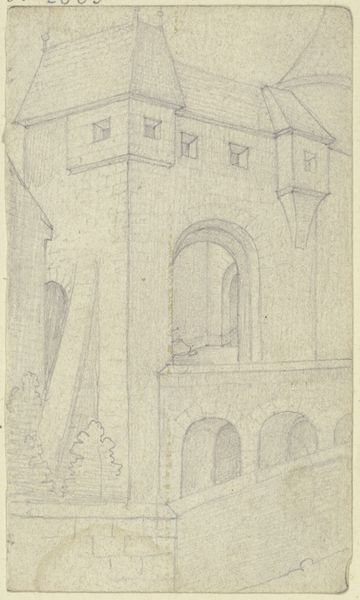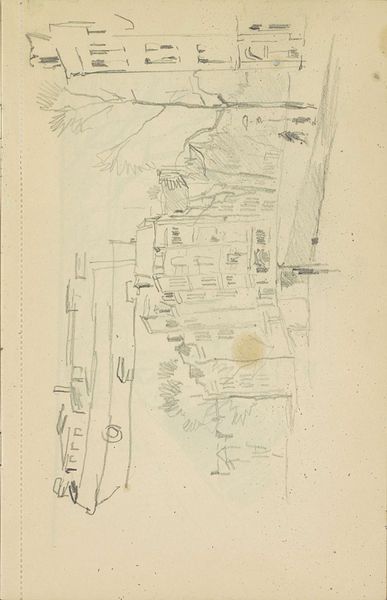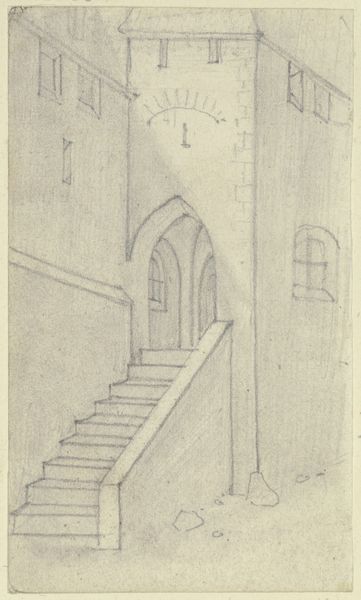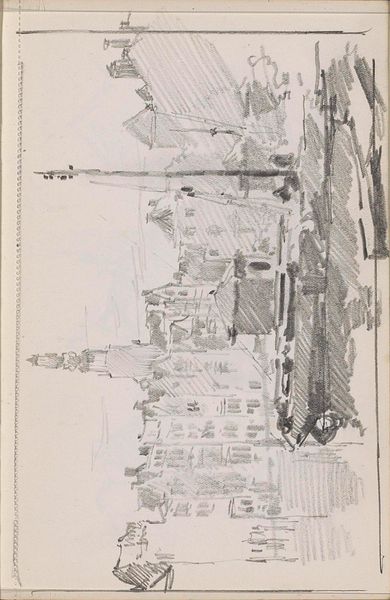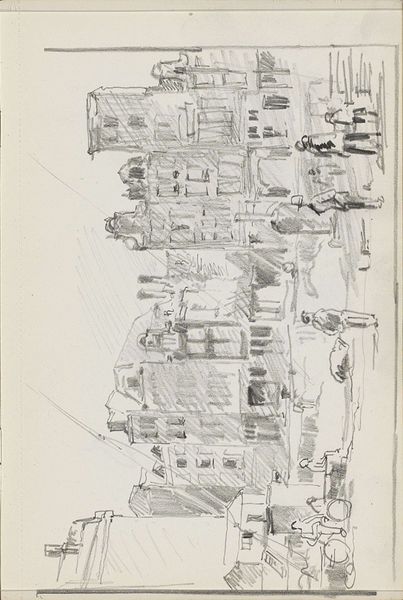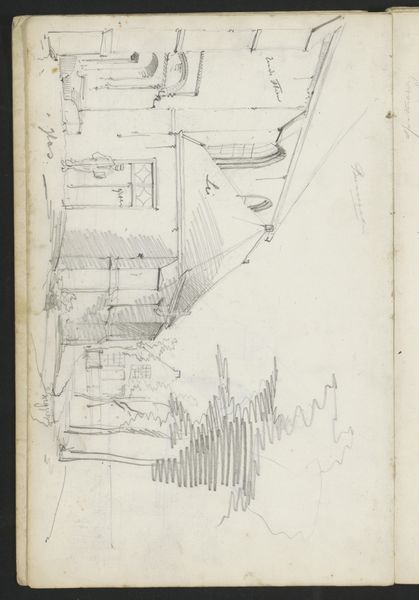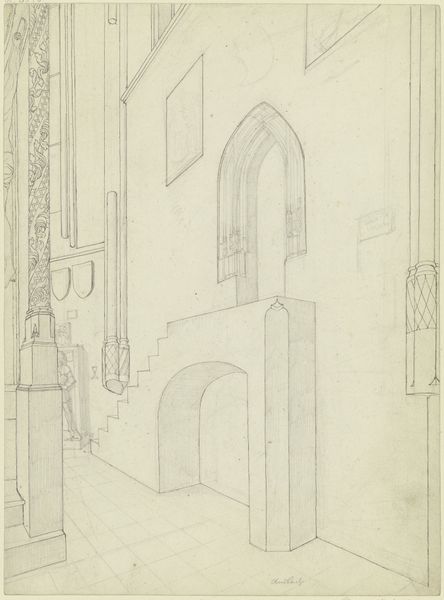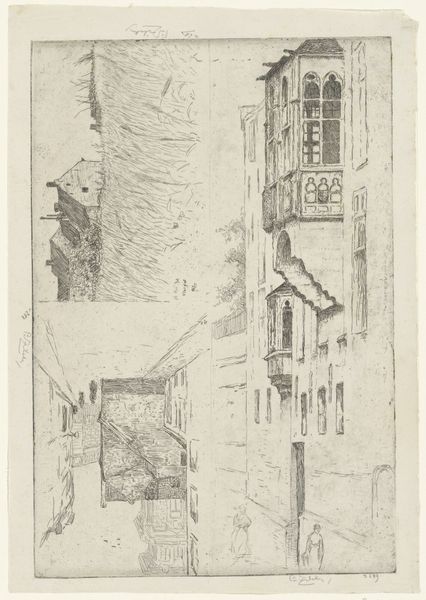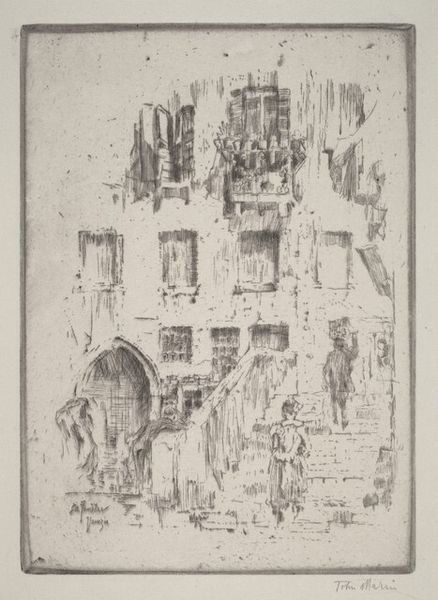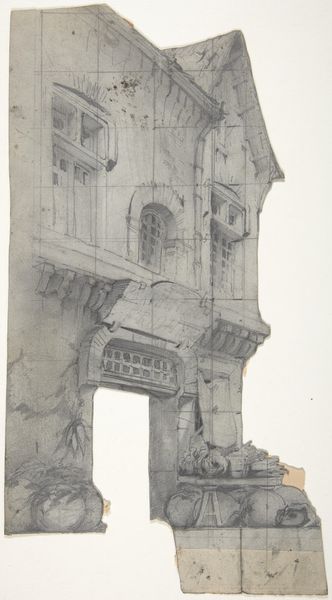
The Discovery of an East Window of All Saints’ Church, behind High Street, Bristol 1821
0:00
0:00
drawing, pencil
#
drawing
#
neoclacissism
#
landscape
#
pencil
#
cityscape
#
history-painting
#
academic-art
#
realism
Dimensions: Overall: 24 x 16.5 cm (9 7/16 x 6 1/2 in.) support: 43.4 x 34.2 cm (17 1/16 x 13 7/16 in.)
Copyright: National Gallery of Art: CC0 1.0
James Johnson made this watercolor of All Saints’ Church in Bristol in 1832. The building’s ruinous state suggests much about the shifting social landscape of England at the time. Johnson's image presents us with a paradox. We see the exposed east window, a symbol of religious and architectural heritage, juxtaposed with signs advertising commercial enterprises such as 'China' and 'Wine'. This blending of the sacred and the secular reflects the changing priorities of a society undergoing rapid industrialization and urbanization. Bristol, a major port city, was at the forefront of these transformations. Johnson highlights the displacement of traditional institutions by commerce. To fully understand this work, research into Bristol’s urban development, the history of All Saints’ Church, and the social conditions of the working class would be invaluable. Johnson’s watercolor invites us to consider the social forces that shape our built environment and the values we attach to it.
Comments
No comments
Be the first to comment and join the conversation on the ultimate creative platform.
